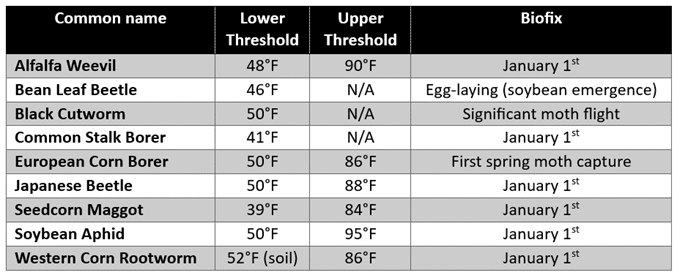Early Season Ectotherm Awareness
BY Dairyland Seed Agronomy Team
Insect (Ectoterm) pressures early in the season are driven by the temperatures experienced by the pest in their current environment. Since insects lack the ability to generate their own body heat, they rely solely on the environment to provide the thermal boost to march through their generational quest to adulthood.
Many agriculturalists are familiar with the use of growing degree day (GDD) or “heat unit” calculations to monitor and predict crop development. We can employ this same concept of predictable development to these insect pests and use weather history to derive models around important benchmarks. Most GDD models use a January 1 calendar date to track development; however, sometimes a specific environmental event called a “biofix” date is utilized as the starting point. Commonly, these weather events transport insect populations greater distances into an area where they typically do not overwinter and then may be subsequently captured and logged.
Using biofix starting points allows us to provide more accurate predictions.

https://crops.extension.iastate.edu/encyclopedia/growing-degree-days-insect-pests

Brian Weller
Western Region
507.456.3034

Rod Moran
Western Region
507.456.3034

Dan Ritter
Central Region
219.863.0583

Branden Furseth
Northern Region
608.513.4265

Mark Gibson
Eastern Region
260.330.8968

Amanda Goffnett
Eastern Region
989.400.3793

Ryan Mueller
Eastern Region
989.400.3793
